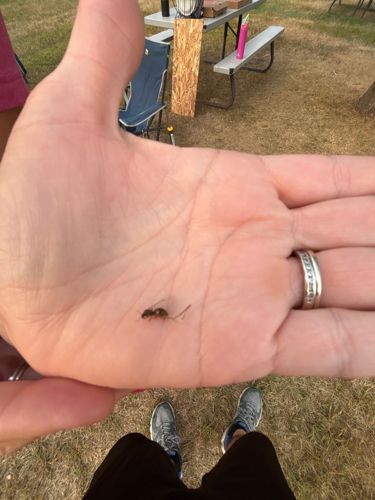Flying Ant / Winged Ant
Scientific Name: Formicidae (various genera and species)
Order & Family: Hymenoptera, Formicidae
Size: 3 mm to 13 mm (0.12 to 0.5 inches) for reproductive individuals, highly variable by species. The individual in the image appears to be on the larger side of this range for a typical ant.

Natural Habitat
Widely varied, depending on the species. Can be found in forests, grasslands, urban areas, and even indoors, often near their nests in soil, wood, or under pavement.
Diet & Feeding
Omnivorous. Diet varies by species but generally includes nectar, honeydew (from aphids), seeds, fungi, other insects (both living and dead), and even household food scraps.
Behavior Patterns
Flying ants are reproductive males and virgin queens that emerge from their colonies for a synchronized mating flight, often called a nuptial flight. This typically occurs on warm, humid days after rain, particularly in late spring or summer. After mating, males die, and fertilized queens often shed their wings and search for a suitable location to establish a new colony, where they will lay eggs and become the sole reproducer for the new ant colony.
Risks & Benefits
Potential risks include nuisance infestations, especially when they emerge indoors. Some species, like carpenter ants, can damage wooden structures. Fire ants can deliver painful stings. Benefits generally include their role as scavengers, consuming dead insects and organic matter, and some species aid in seed dispersal and soil aeration. They are also a food source for many other animals.
Identified on: 9/5/2025